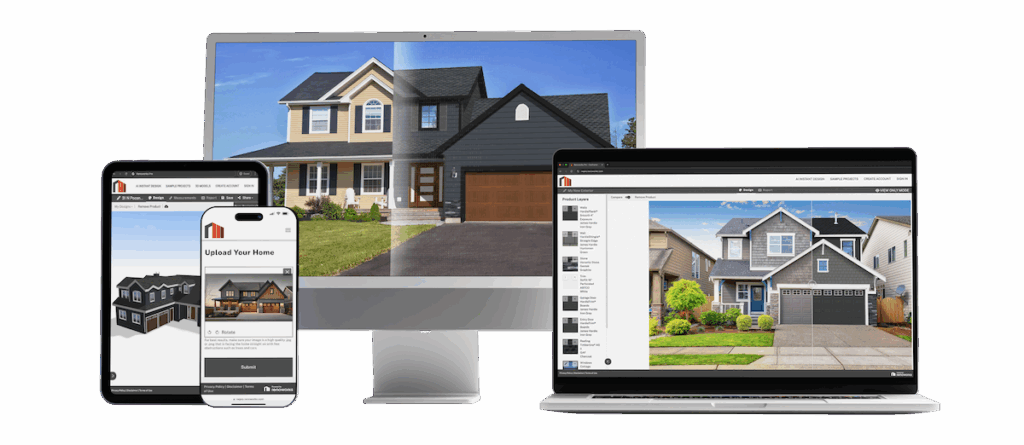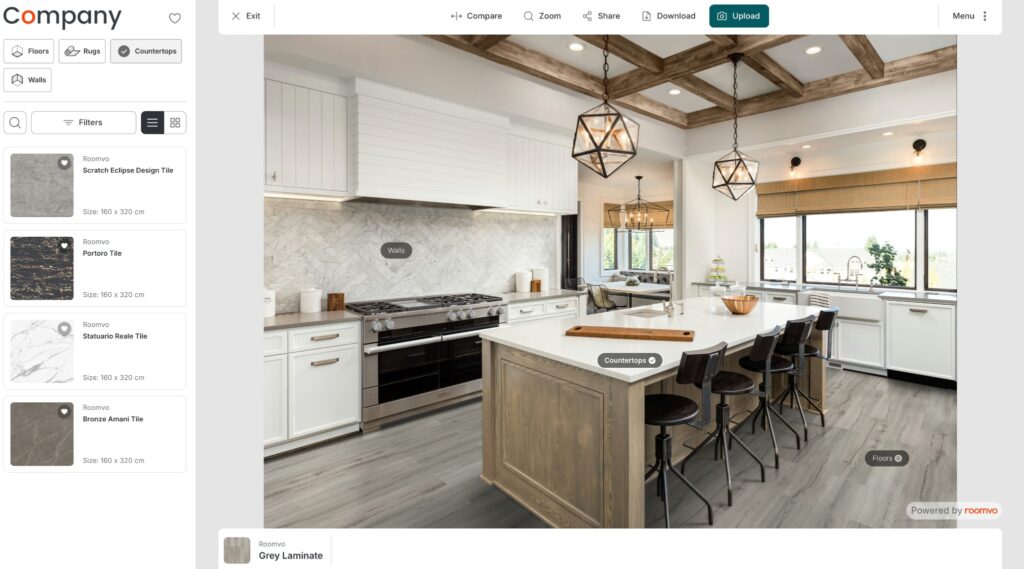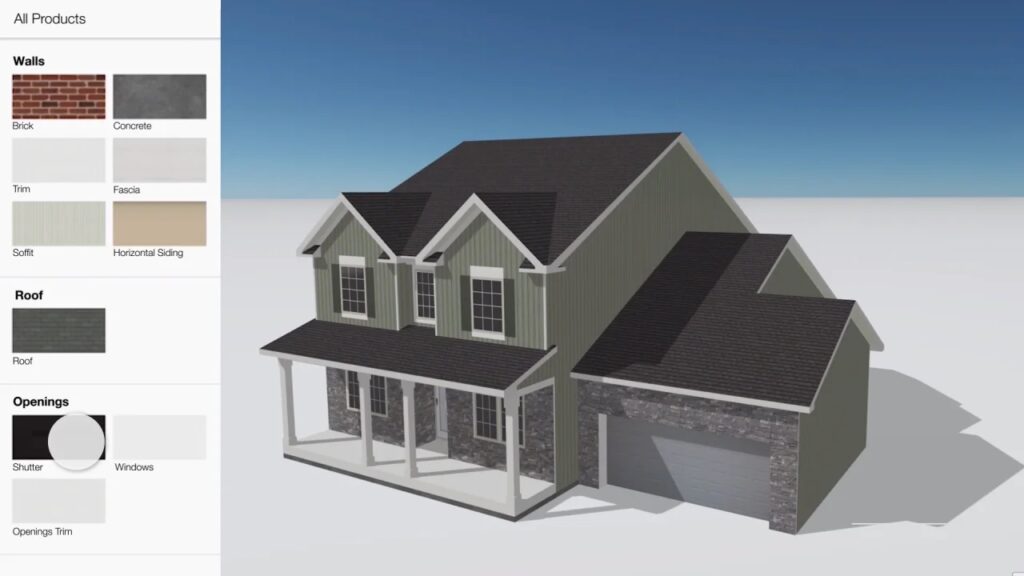TLDR
Digital marketing isn’t optional anymore—it’s the engine that lets small construction companies generate leads on autopilot, outrank bigger crews, and win higher‑margin jobs. Inside this playbook you’ll find a proven marketing strategy that combines search engine optimization, pay per click advertising, email marketing follow‑ups, and conversion‑focused content marketing. Ready for a quick victory? Drop a homeowner photo into the Renoworks Siding Visualizer and watch the sale move itself forward.

Why Construction Companies Need Digital Marketing Now
The old model—yard signs, word of mouth, and the occasional flyer—no longer fills a calendar. Eighty-one percent of homeowners research contractors online before calling. If your digital marketing footprint is weak, you may never make the shortlist.
That’s why successful contractors pair a strong marketing strategy with the right tools. From managing leads in the 20 best CRMs for contractors in 2025 to helping homeowners visualize projects using top exterior design apps and our head-to-head comparisons of visualization platforms, digital solutions are becoming essential to winning jobs.
Strong search engine optimization (often shortened to SEO) ensures you appear at the moment a prospect types “roof repair near me.” Targeted PPC campaigns extend your reach, and an evergreen email marketing sequence turns clicks into booked site visits.

Core Pillar 1: A Website Built for Search Engine Optimization and Conversion
Your website is the cornerstone of every other tactic. Follow these steps to maximise optimization:
Load in under three seconds on mobile. Search engines reward speed, and homeowners abandon slow pages.
Open with a headline that pairs digital marketing benefit language with a tangible promise: “Expert Roofing for Calgary Homes—Free Same‑Day Quote.”
Feature authentic photos; original imagery boosts trust and keeps visitors engaged, an important on‑page SEO signal.
Repeat your NAP (name, address, phone) in the footer to reinforce local search engine optimization.
Tip: Use schema markup to help search engines read your service areas and generate rich snippets.
Core Pillar 2: Google Business Profile—Free Advertising That Works
Your Google Business Profile is a billboard you don’t have to pay monthly for. Complete every section, upload weekly project photos, and ask every satisfied customer for a review. Those stars show up before your website does and act as social proof for both organic and paid traffic.
Post updates that highlight safety checks, material quality, and before/after visuals.
Answer questions publicly; each response becomes keyword‑rich content Google indexes.
Core Pillar 3: Paid Advertising Without Waste
Paid traffic is a scalpel, not a sledgehammer. Blend PPC search ads with display retargeting so you appear when intent is highest.
| Channel | Goal | Key Metric |
|---|---|---|
| Google Ads (pay per click) | Capture high‑intent searches | Cost per qualified lead < $75 |
| Local Services Ads | Phone calls from nearby homeowners | 20 calls / month |
| Facebook / Instagram retargeting | Remind site visitors | 5% click‑through rate |
Smart bidding plus negative keywords prevent budget leaks. Always send ad clicks to a landing page that continues the exact promise in your ad copy, uses the term digital marketing for contractors in the first 100 words, and features a clear CTA.
Core Pillar 4: Content Marketing That Builds Authority
Blogs, video walkthroughs, and downloadable checklists create long‑tail visibility. A consistent content marketing calendar lets you climb rankings without additional ad spend. Focus each post on one homeowner pain point. Example topics:
“What is the best form of advertising for contractors in Alberta?”
“How long does fiber‑cement siding really last?”
“Top 5 winter roof maintenance tips to prevent leaks.”
Sprinkle secondary keywords—marketing strategy, construction business, optimization—naturally so they hit upper‑threshold counts by the end of the quarter.
Core Pillar 5: Email Marketing—the Silent Salesperson
Add every prospect and past customer to segmented lists. A simple three‑email drip converts estimates into signed contracts:
Project scope recap with timeline graphic.
Social proof email showing similar jobs and five‑star reviews.
Deadline nudge: “Secure your spot before winter pricing.”
Open rates above 35 % are common because homeowners see your name onsite and in their inbox.
Core Pillar 6: Optimize With Data
Optimization isn’t guesswork. Track these KPIs monthly:
Organic impressions (goal: +20 % QoQ)
Click‑through rate on pay per click ads (goal: 5 %+)
Cost per email subscriber (goal: < $3)
Close‑rate of leads generated via interactive visualizer (goal: 30 %+)
Adjust copy, bids, and content topics based on trends, not hunches.
90‑Day Action Plan
Weeks 1–4: Technical SEO fixes, compress images, secure SSL. Publish two service pages using the phrase “digital marketing for contractors.”
Weeks 5–8: Launch pay per click test focused on emergency roof repair. Begin a bi‑weekly content marketing cadence.
Weeks 9–12: Add chatbot to capture after‑hours leads, integrate email marketing automation, request ten new reviews.
Common Pitfalls
Treating digital marketing as a one‑off project instead of an ongoing process of optimization.
Running advertising campaigns without matching landing pages.
Forgetting to nurture leads—email marketing fills that gap.
Core Pillar 7: Social Media That Builds Local Authority
A decade ago, social media felt like a popularity contest. Today it functions as micro‑advertising that costs nothing but a few minutes with your phone. Homeowners check Instagram and Facebook for real‑world proof before they ever read case studies on your site.
Focus on Proof, Not Followers
Use Instagram Reels to show a 30‑second time‑lapse of shingles coming off and fresh architectural‑grade shingles going on. Include captions that mention the neighbourhood and the material brand—those details feed Google’s image search engine.
Go Live on Facebook at the final walkthrough. Ask the client what surprised them most about the process. Their answer, unscripted, is worth more than any polished ad.
Share LinkedIn Project Posts if you also serve commercial clients or property managers. LinkedIn’s algorithm still gives organic reach to detailed posts with six or more images.
Pro Tip: Tag local suppliers and complementary trades in every social post. They will often reshare, multiplying reach without extra ad spend.
Core Pillar 8: Lead Generation Tools That Convert Browsers Into Buyers
Digital marketing succeeds when every touchpoint pulls a prospect closer to a signed agreement. Two categories of tools accelerate conversion:
Interactive Visualizers
The Renoworks Siding Visualizer lets prospects upload their own photo, try different colours, and see immediate transformation. Data shows homeowners who spend five minutes in a visualizer submit contact details 2.5× more often than those who simply view a gallery.
Smart Forms and Calculators
Embed a roofing cost calculator or siding life‑span estimator on key service pages. When visitors input square footage or house age, the form captures email addresses for follow‑up. Pair that data with email marketing automation so each inquiry receives a personalised scope and a link to book a site visit.
Case Study: Calgary Roofer Slashes Cost Per Lead by 42 %
Last spring, Highland Peak Roofing—an eight‑person construction business in Calgary—relied on word of mouth and print ads. Leads had slowed and sales cycles dragged past 30 days. After implementing the pillars in this guide, results followed fast:
Website optimisation: compressed images and added schema. Bounce rate fell 18 %.
Google Business updates: weekly progress photos and keyword‑rich answers. Calls from search engine listings doubled.
PPC campaign: tightly targeted “emergency roof repair Calgary” with a $25/day budget. Cost‑per‑qualified‑lead dropped from $112 to $65.
Email marketing drip: three‑email sequence closed 28 % of open proposals within two weeks.
Social media proof: Instagram highlights featuring before/after stories generated 14 additional DMs per month.
Within 90 days Highland Peak booked an extra $96 000 in revenue—all traceable to digital channels.
Toolbox: Must‑Have Apps for Continual Optimisation
| Task | Tool | Why It Matters |
| Keyword research | Google Keyword Planner, Ahrefs | Finds untapped phrases like “hail‑resistant shingles quote” |
| Graphic design | Canva | Fast social media templates that stay on brand |
| Email marketing | Mailchimp, Constant Contact | Drag‑and‑drop drip builders and conversion tracking |
| Project visuals | Renoworks Visualizer | Converts curiosity into high‑intent consultations |
| Call tracking | CallRail | Proves which ads and pages generate leads |
| Reporting dashboard | Google Looker Studio | Combines ads, SEO, and email data in one optimisation panel |
Pillar 9: Analytics and Continuous Optimisation
The most successful construction companies don’t guess—they test. Web analytics platforms like Google Analytics and Looker Studio show exactly which traffic sources generate leads. Use them to track bounce rates, average session duration, and form submissions per page.
Every 30 days, review your top‑performing pages and ask: Can we add another call to action? Are we using all relevant keywords like local SEO, pay per click, and lead generation? Pages that attract visitors but don’t convert often lack a strong digital marketing strategy or fail to speak directly to the homeowner’s problem.
To fully optimize performance, look at ad impressions vs. conversions in Google Ads and Meta Ads dashboards. If one campaign shows high reach but low click‑throughs, adjust your advertising copy to align with the promise on your website landing page. These small refinements, month over month, create massive improvements in ROI.
Don’t overlook this: Many small construction businesses set up analytics once and never touch it again. Make performance review part of your standard monthly process—just like reviewing material costs or field hours.
Bonus Tip: The Contractor’s Guide to a Digital Marketing Strategy
Still struggling with where to start? Here’s a quick breakdown of what a digital marketing strategy should look like for modern contractors:
Website – Fast, mobile‑ready, built to convert. Mention services clearly and embed your service areas. Use original photography from your past construction jobs.
Search engine optimization (SEO) – Blog monthly using common search terms like “best siding for cold climates” or “how long does a roof last in Alberta.” Internal link each post to a core service page.
Advertising – Run pay per click (PPC) ads targeting your top 3 services. Use retargeting ads on Facebook to remind recent site visitors about your brand.
Email marketing – Build a list from inquiries and past clients. Send value‑driven updates, maintenance tips, and occasional promotions.
Social media – Share job photos, team spotlights, and short “how it’s made” videos from job sites. This builds trust and shows proof of work.
Analytics – Check conversion rates, session length, and bounce rate. Use A/B testing to tweak landing pages.
This framework, when implemented fully, helps contractors take control of their pipeline and stop relying on cold calls or feast‑and‑famine referrals. It works equally well for roofing contractors, siding specialists, and general construction companies that need consistent leads.
Bonus Section: Paid Advertising Pitfalls Contractors Must Avoid
Many small construction companies waste thousands on ads without a clear strategy. One of the most common mistakes contractors make is sending paid traffic to their homepage instead of a dedicated landing page. If you’re running Google Ads or Meta ads, make sure every click goes to a page built for that specific campaign—with clear service info, trust signals, and a call to action.
Another issue: contractors often turn on advertising without having conversion tracking in place. Without Google Analytics or a platform like CallRail set up, it’s impossible to know which ads actually generate phone calls or lead forms. High impressions with low conversions often signal misalignment between ad copy and the destination website.
Don’t just “run ads”—engineer them. Successful advertising campaigns for construction companies match homeowner needs with contractor strengths, using intent‑driven keywords and hyper‑local targeting.
Tip: Always run at least two ad variations to A/B test headlines and visuals. The version that wins becomes your new baseline.
Bonus Section: Website and Social Media Maintenance Checklist
Once your marketing is live, the real work begins—keeping it fresh. A neglected website or dusty social media profile signals that a contractor is no longer active or invested. Use this checklist to stay current:
Update website project galleries monthly with at least two new job photos
Replace outdated contact info or certifications within 48 hours of any change
Refresh testimonials quarterly with recent homeowner feedback
On social media, post project updates every 7–10 days
Reshare supplier ads or promo events you’re participating in
Add seasonal maintenance tips—these build homeowner trust and keep Google crawling your page
Contractors who keep their websites and profiles updated don’t just rank higher—they win more business. When prospects compare three companies and one has proof from last week, they pick that one.
If you’re a construction company trying to scale, treat your website and social media as active job tools—not set‑it‑and‑forget‑it brochures.
Conclusion: Craftsmanship Wins the Job; Digital Marketing Wins the Click
Exceptional workmanship will always matter, yet prospects must find—and emotionally trust—you first. Combine search engine optimization, strategic PPC advertising, engaging social media proof, and trust‑building content marketing to generate leads faster than you can schedule crews. Begin with a single action—load one project photo into the Renoworks Siding Visualizer—and watch the power of digital marketing unfold.
FAQ: Common Questions Contractors Ask About Digital Marketing
How long before SEO delivers leads?
Most construction companies see organic traffic lift within 90 to 120 days once pages are optimised and backlinks accrue.
Is PPC too expensive for small crews?
Not if you narrow bids to high‑intent, local keywords. Even a $15 daily budget can deliver profitable calls when ads point to dedicated landing pages.
Which social media platform converts best?
Instagram leads for residential remodels; LinkedIn for commercial maintenance contracts. Test both and track lead generation numbers.
Do I need separate pages for every suburb?
Yes. Hyper‑local pages help search engines match “roofing Airdrie” or “siding Okotoks” queries to your business.
Should I outsource content marketing?
If writing steals time from the field, partner with an agency—but insist on authentic photos and trade‑accurate language.
What does good optimisation look like?
Page speed < 3 s, title tags under 60 characters, meta descriptions that end with a call to action, and internal links pointing to your highest‑margin services.
How many emails are too many?
One informative email per month keeps you top of mind without clogging inboxes. Drips around active estimates can be more frequent.
Are Google Reviews really that important?
Yes—84 % of homeowners treat online reviews like personal recommendations. Make review requests a formal step in your close‑out process.
Do visualizers work for roofing?
Absolutely. Renoworks supports roofing, siding, and windows, letting prospects experiment until they’re emotionally invested.
What’s the difference between SEO and local SEO for contractors?
SEO focuses on ranking your website in general search results, while local SEO helps you show up in map packs and “near me” searches. Both are essential for lead generation if you’re a contractor serving a specific area.
How do I build an effective digital marketing strategy for my construction company?
Start by defining your top services, locations, and client types. Build a fast, mobile-optimized website, run Google Ads for quick visibility, and use content marketing and email marketing to nurture long-term leads.
Why is my website getting traffic but not leads?
This usually means your website needs optimization. Use analytics tools to review user behavior, speed, and conversion points. You might need better CTAs, clearer messaging, or trust-building visuals like reviews and certifications.
Is social media actually useful for lead generation?
Yes—especially when combined with paid advertising. Social media builds trust, keeps your construction business visible, and reinforces the credibility you need to close online-generated leads.
How much should a contractor spend on advertising each month?
A common rule is 5–10% of monthly revenue. Smaller construction companies might start with $500–$1,000 on Google Ads or Meta ads, then scale based on lead performance and ROI tracked through analytics.

REAL RENOVATION BIDS NEAR YOU
Stop calling contractors. Let them come to you.
For a limited time, we’ll design your project with you and source bids from trusted contractors – simple, clear, stress-free renovation.







